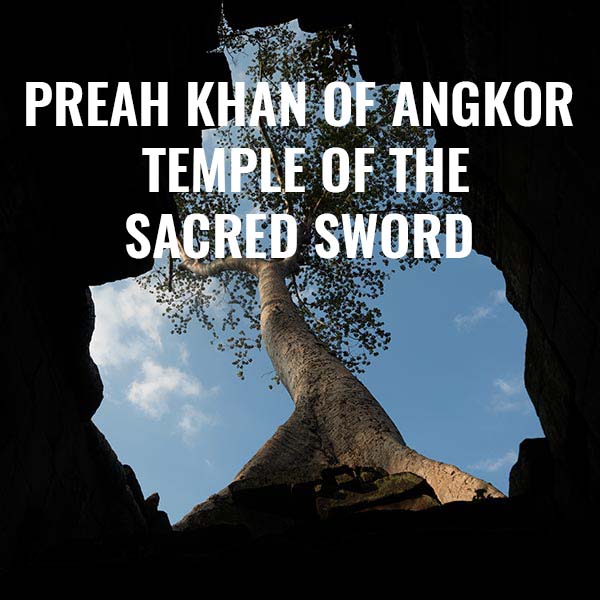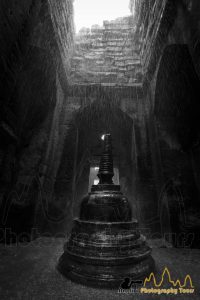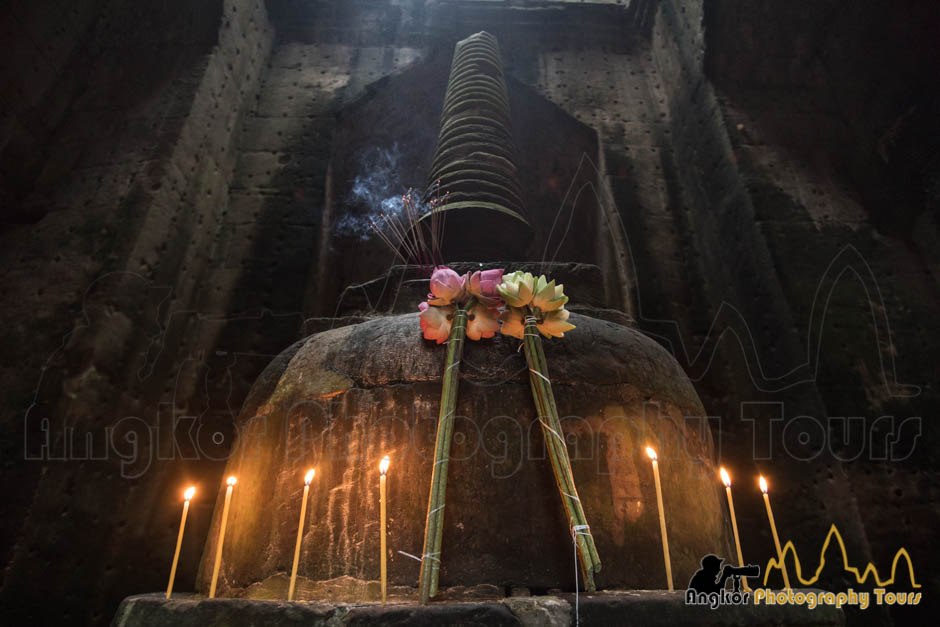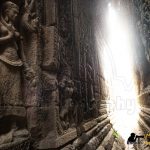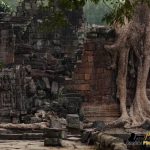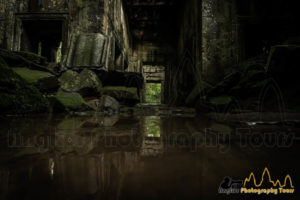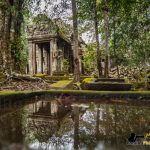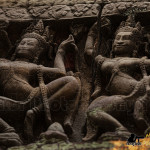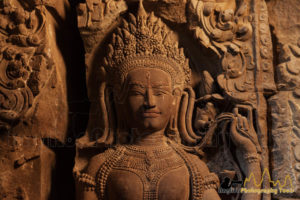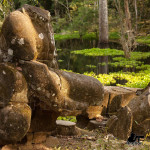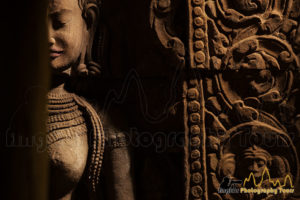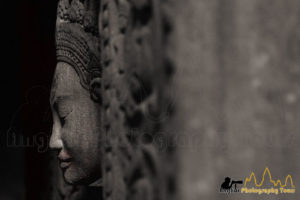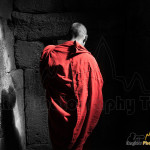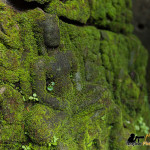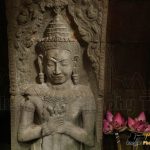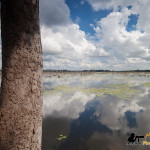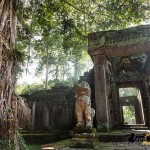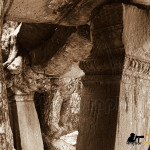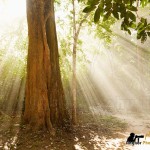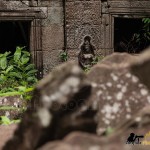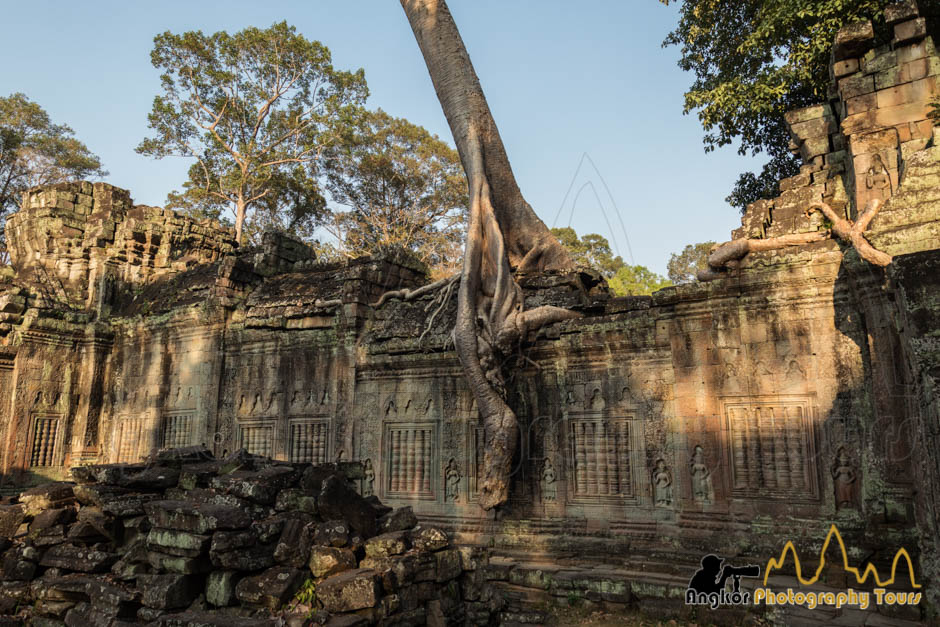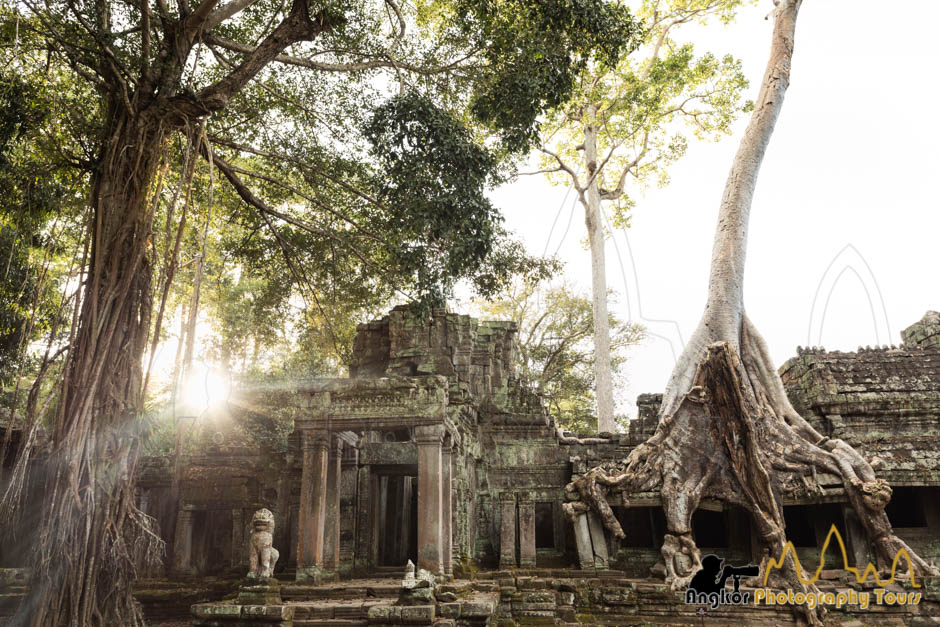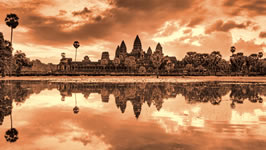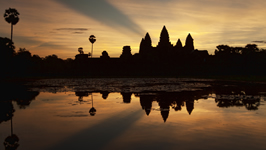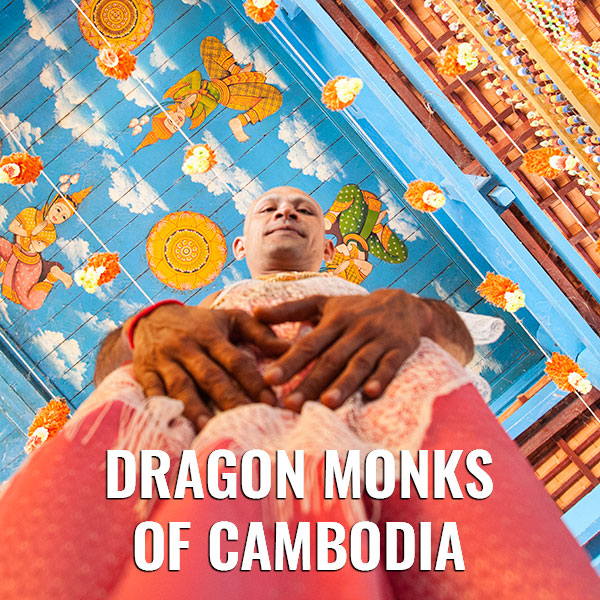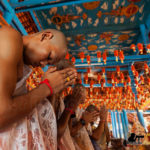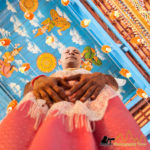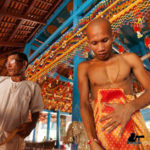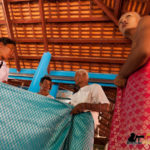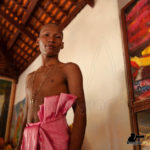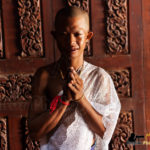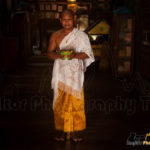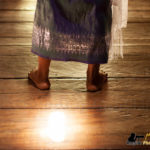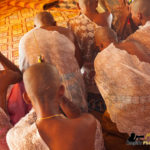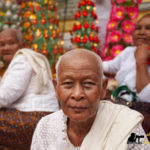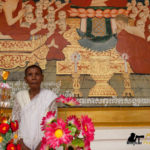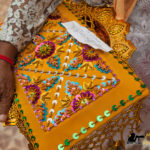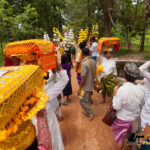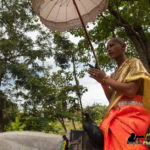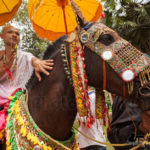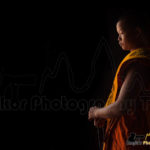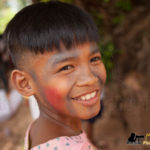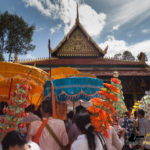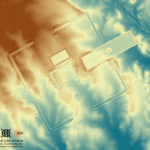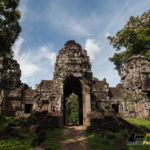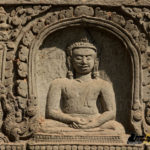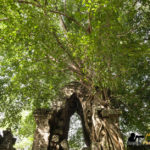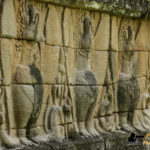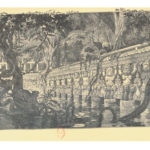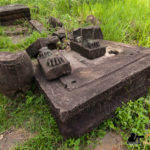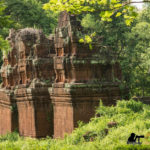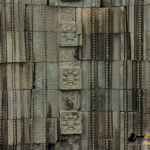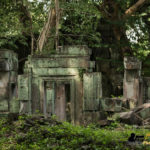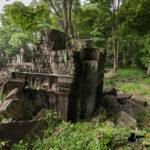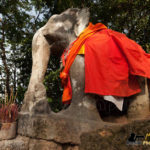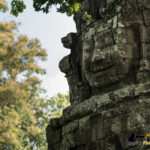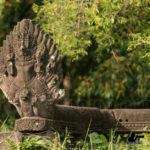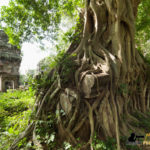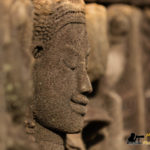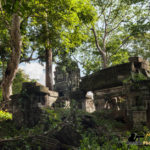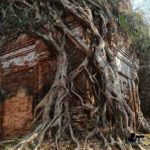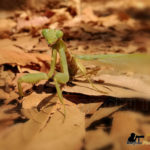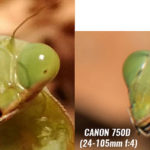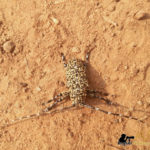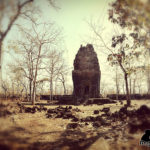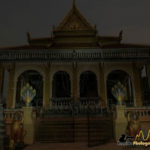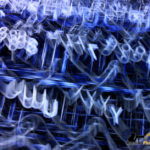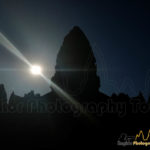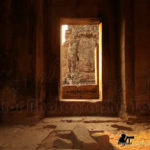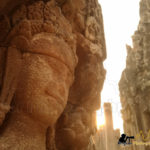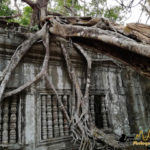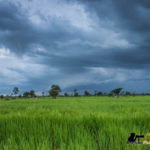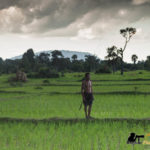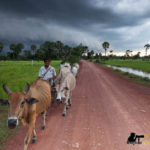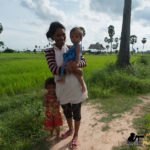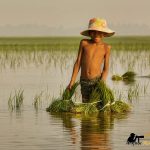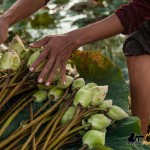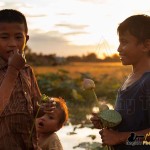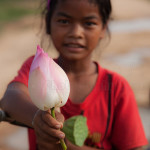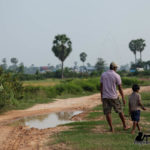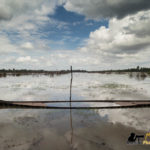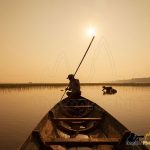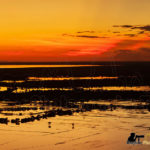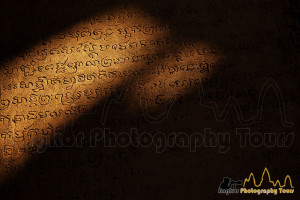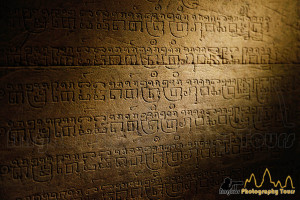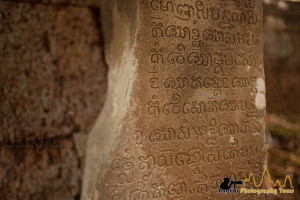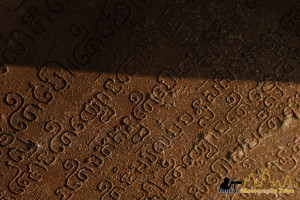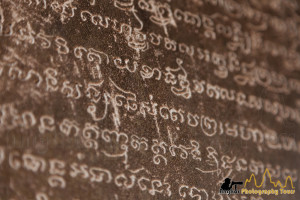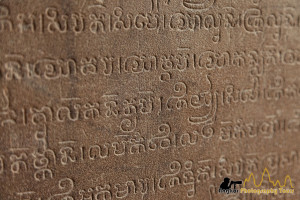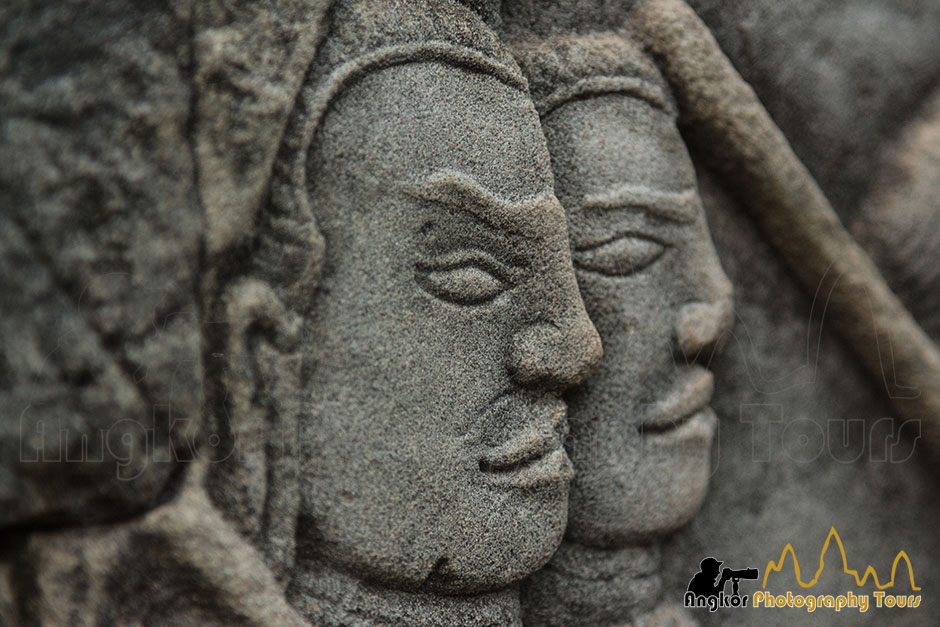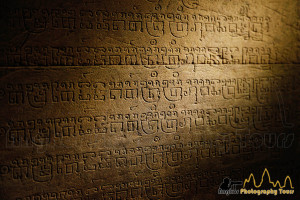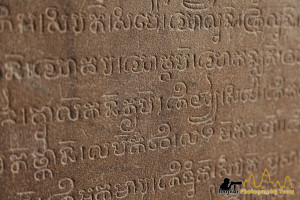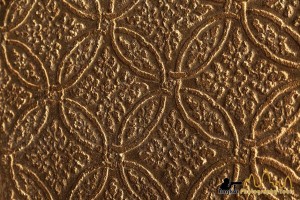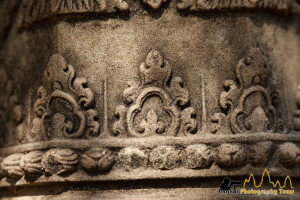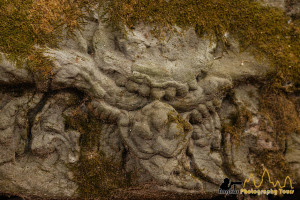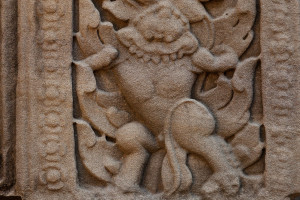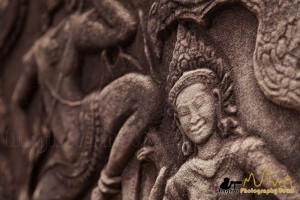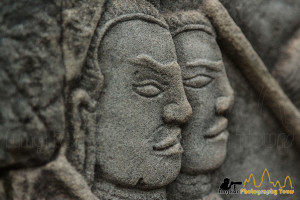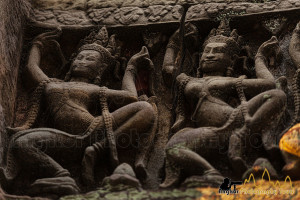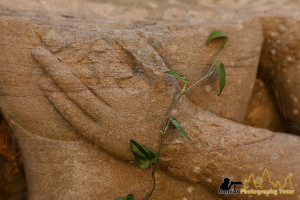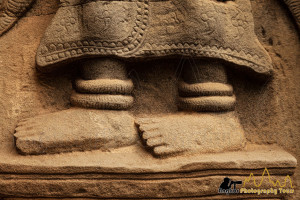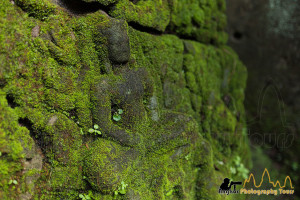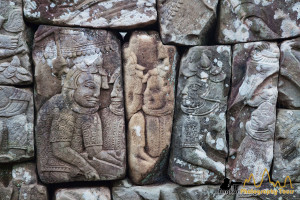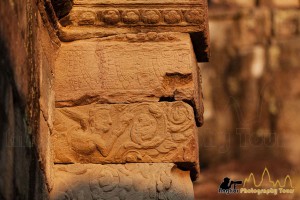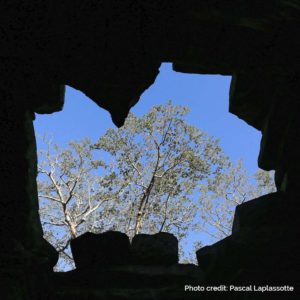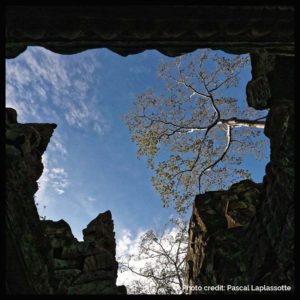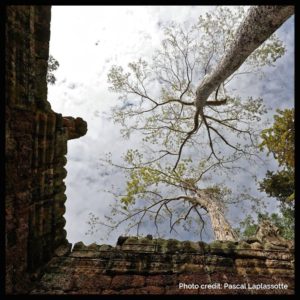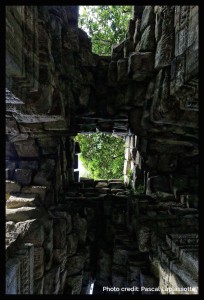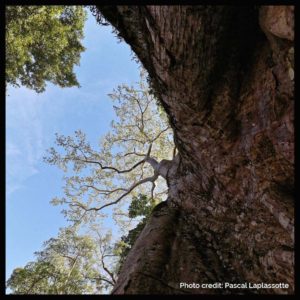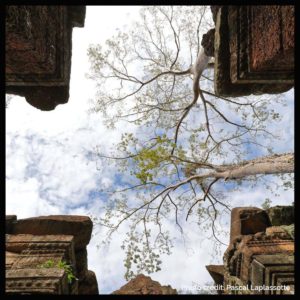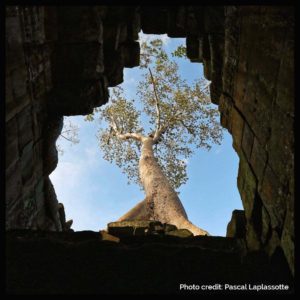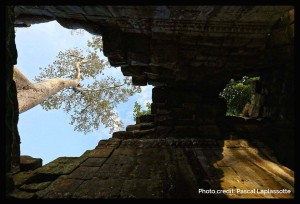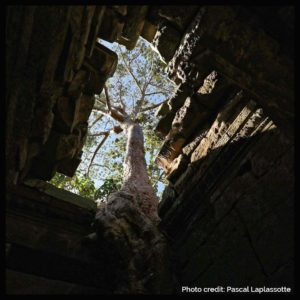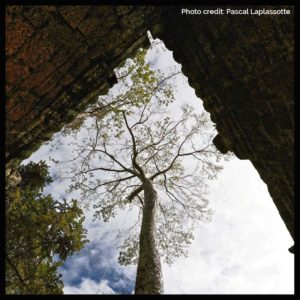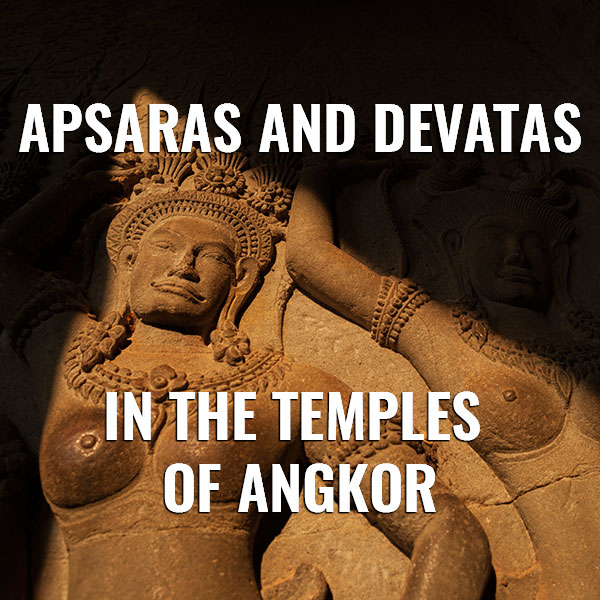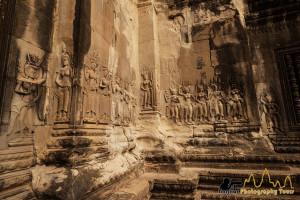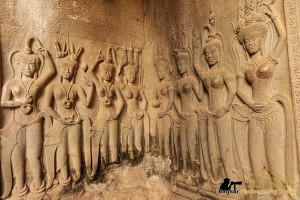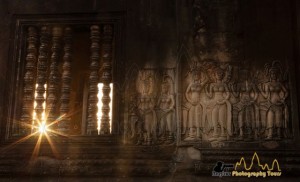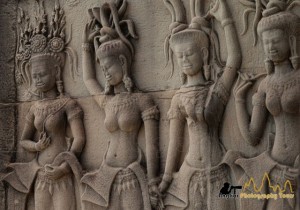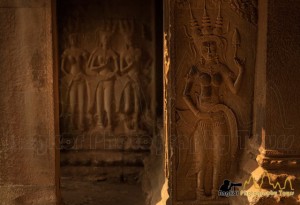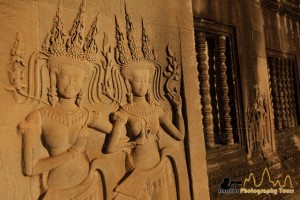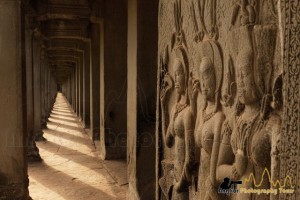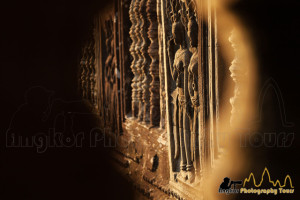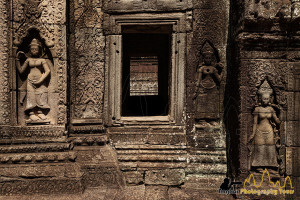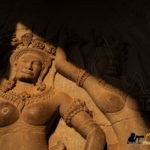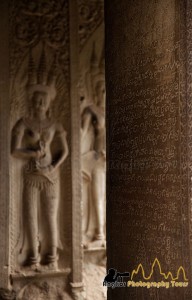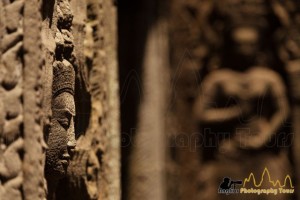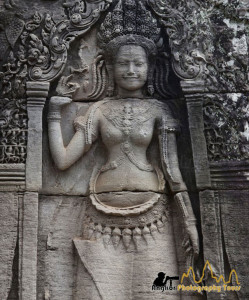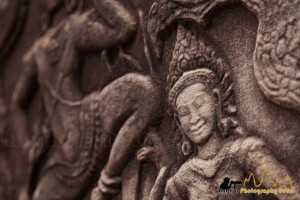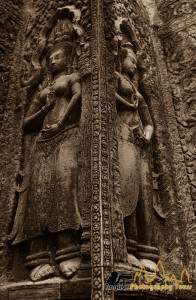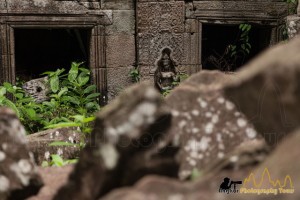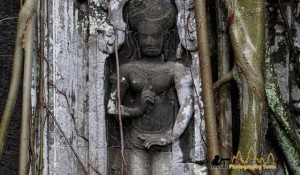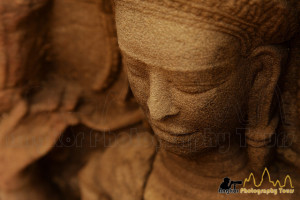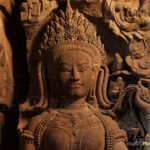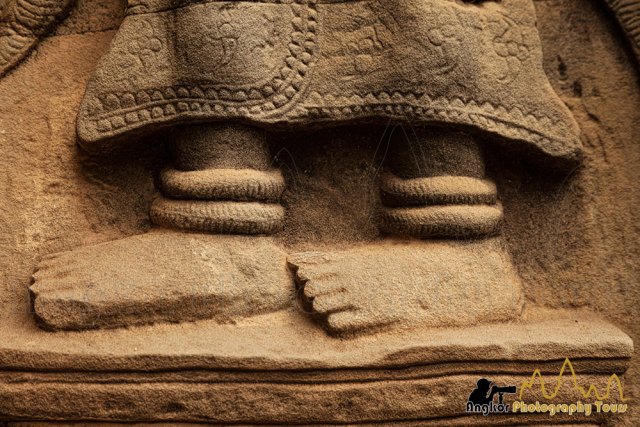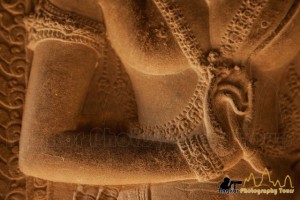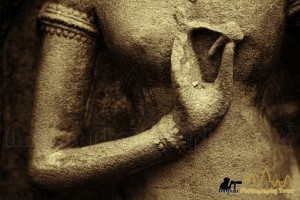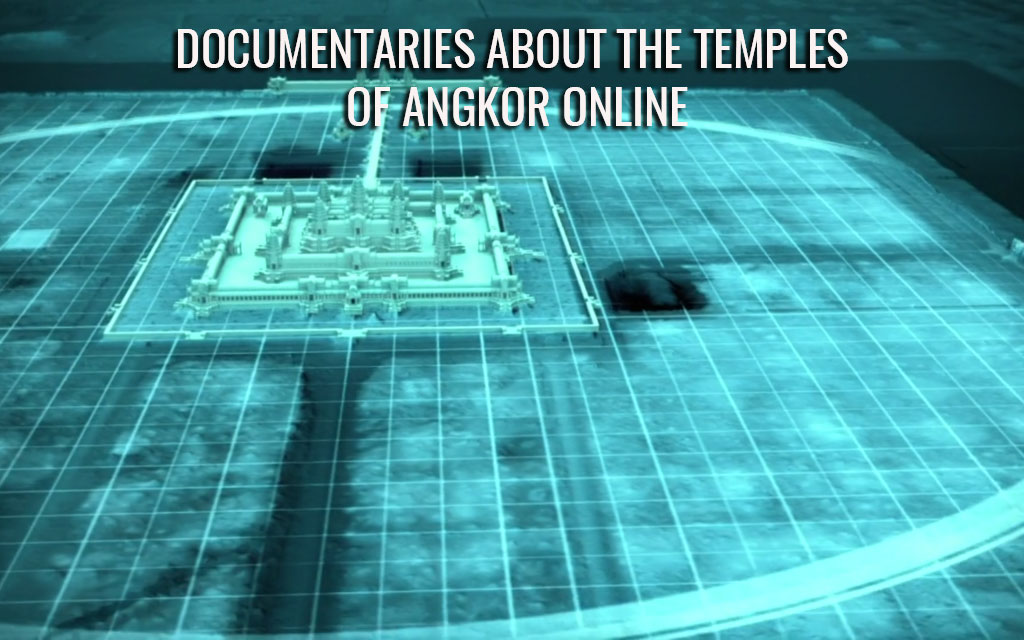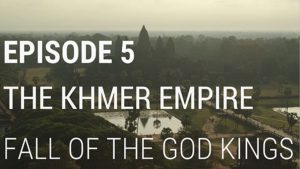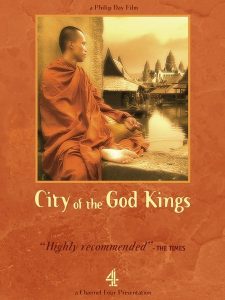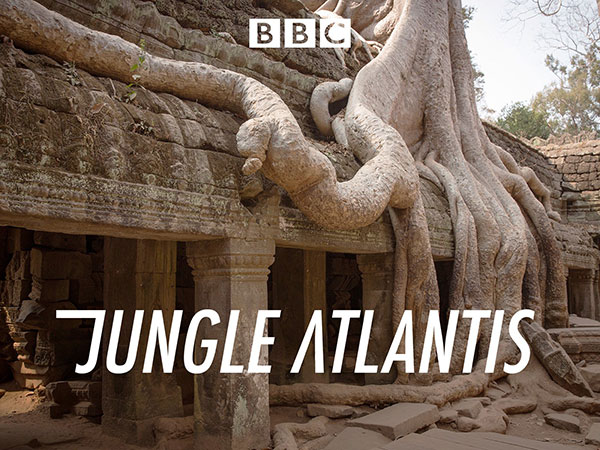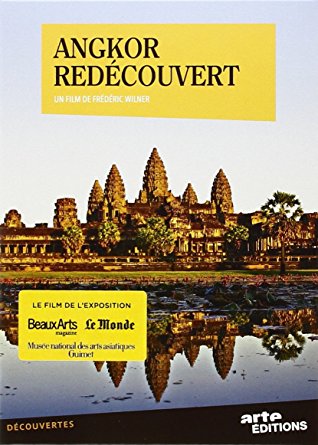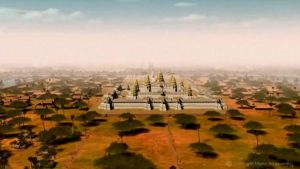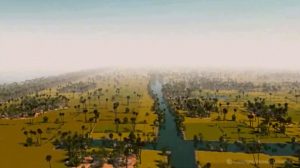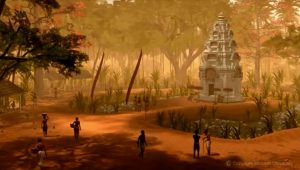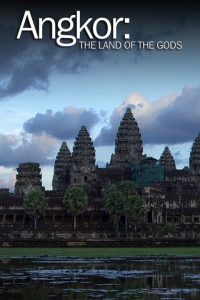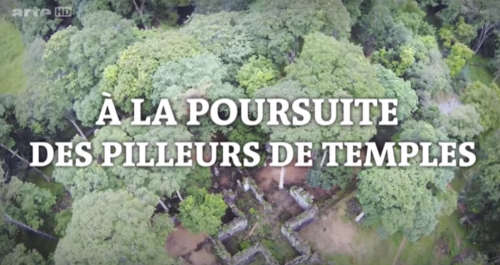Preah Khan, temple of the sacred sword
Preah Khan of Angkor, not to be mistaken with Preah Khan of Kompong Svay, is one of the most beautiful and underrated temple within the Angkor archaeological park. Although Angkor Wat is the most impressive in term of architecture and symmetry it lacks some atmosphere.
When you visit Preah Khan, you will have the feeling of being one of the first explorers wandering within the narrow corridors, courtyards and concealed chambers. The walls of this ancient site boast an extraordinary palette, adorned with various shades of green, black, and red, courtesy of the diverse lichen and moss species. Colors are changing also with the seasons making this temple an ever changing playground for photographers. It is one the rare temple in Angkor worth exploring with your camera under the rain
This temple, commissioned in 1191, is a Hindu-Buddhist temple complex built during the reign of Jayavarman VII, one of the most charismatic Khmer king who built also the famous temples of Ta Prohm and Bayon. It is also known as the temple of the sacred sword, and dedicated to the father of Jayavarman VII (divinity Jayavarmesvara). The temple was a monastic city dedicated to teaching and of course a place of devotion. A stele discovered in 1939 by Maurice Glaize gave away many information for example 100,000 people were living on site, including 1000 teachers. We also learned that the temple was built on the battle site where Jayavarman VII defeated the Cham army. 60 tons of gold inlays were believed to be in the temple making an unique treasure in the 12th century.
Preah Khan | Temple layout
The temple was built on a flat ground oriented East to West, with a naga bridge on both side (most visitors enter via the west entrance). There are also two other entrances on the north and south of the temple, the later one not been used. The temple complex spread on 56 hectares with 4 concentric enclosures. It has 72 garudas (mythical bird-man),holding two nagas, all spread around the outer wall. The 40 meters wide moat is full of water all year around although some sections are dry during the months of April and May.
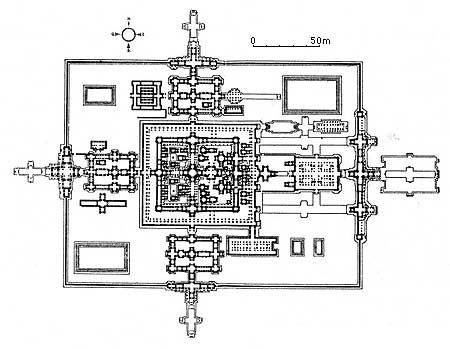
Preah Khan temple | Conservation work
Past
The first conservation work was carried out by Henri Marchal from the EFEO between 1927 and 1932. After the war, conservation works was resumed by the WMF (Word Monument Fund) with a series in missions in 1991,1992, 1993 and 1994. In the 90’s, archeologists described the temple as a partial ruin deep in the jungle. Beside the consolidation and the restoration of many structures, an important goal of all these missions was to train Khmer people in conservation.
Like many temples of Angkor, Preah Khan suffered from looting during the Khmer rouge regime. By looking at archive pictures and footage you can see that a lot of statues are missing now. For example the two guardians at the west gopura still had their head in 1968 and a lion was still standing before the platform.The naga bridge on the east side just have half of giant face left out of the original 108…. Not so long ago, in 1993 and 1996, thieves tried to steal stone heads of Asura but fortunately got stopped.
Current
In 1996, WMF launched the Adopt a Garuda program. With a donation of USD 25,000 a garuda can be completely restored. The program is quite successful as in 2009, 27 of the 72 have been restored so far. Preah Khan is actually part of a larger WMF program which includes also Angkor Wat and Phnom Bakheng.
- The project of dismantlement and reconstruction of of a small building close to the central sanctuary which a had a dead tree on top of it is now over. Although it is small building several hundreds of number sandstone blocks are laying on the ground ready to be put together like a puzzle which gives an idea of the daunting task of the workers who worked in the temple in the 90’s.
- The visitor center was completely dismantled in 2017 and a new one is under construction at the same location. The previous building hosted some interesting information panels about the restoration work of the 90’s as well as some large pictures.
- A major conservation work is on pause on the east entrance by the Archaeological Survey of India for many years now aims at restoring two of the three towers.
Visit highlights
Preah Khan has many locations to explore, you should plan a 1 h 1/2 to 2 h to cross the temple from West to East especially if you are taking pictures. Among the highlights are the stupa at the central sanctuary, a linga with its yoni, the hall of dancers, the biggest strangler fig in Angkor beside the east gopura, the 2-story pavilion, the baray on the east leading to Neak Pean and Ta Som. If you want to see the secret chambers it is recommended to hire a guide as they are difficult to find.
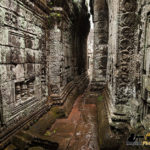
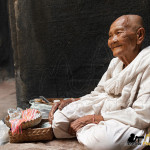
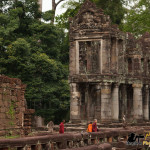
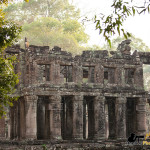
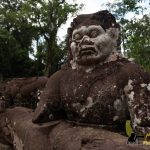
Apsara dancers ornements in the hall of dancers
Devata (Queen Indradevi)
Crumbling headless statue of an Asura
Hidden Devata (Queen Jayarajadevi)
Hidden Devata (Queen Jayarajadevi)
Monk exiting a secret chamber
Buddha carving covered in moss
Hidden guardian with flowers offering
Preah Khan Jayatataka
One of the standing lion at the eastern gopura
Nature and sandstone intertwined
Beams of light of the forest
Hidden Devata
The biggest tree (Tetrameles nudiflora R.Br. Datiscaceae) in Preah Khan, facing west
The biggest tree of the temple growing on the eastern gopura
Unfortunately the beautiful tree above (Tetrameles nudiflora R.Br. Datiscaceae) has been cut in 2020 and now just a shadow if itself:(
Related videos
A Walk through the Preah Khan Temple Complex, Cambodia (2012 World Monument Fund English, 5 min)
watch online: Complete (5 min)
